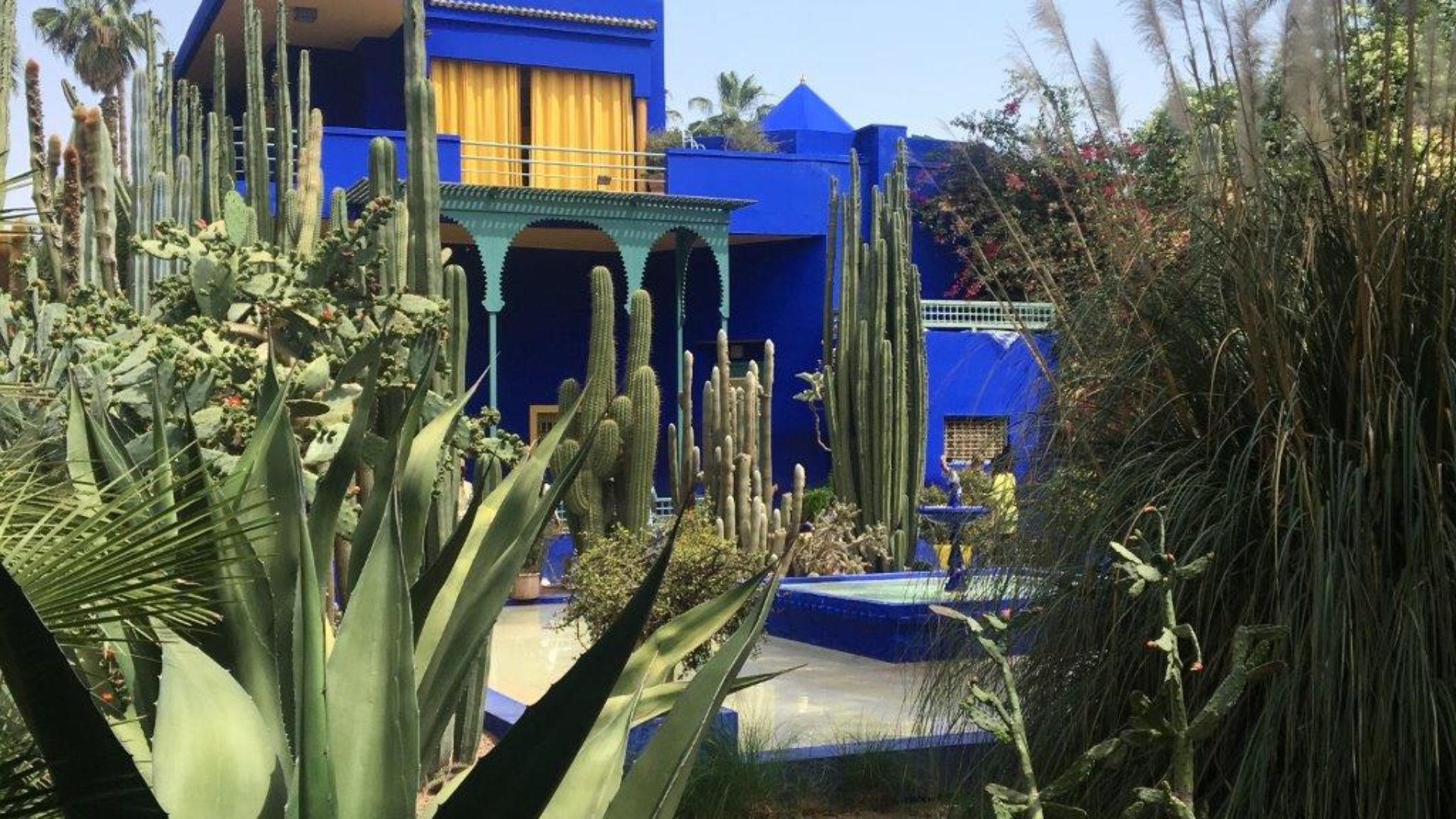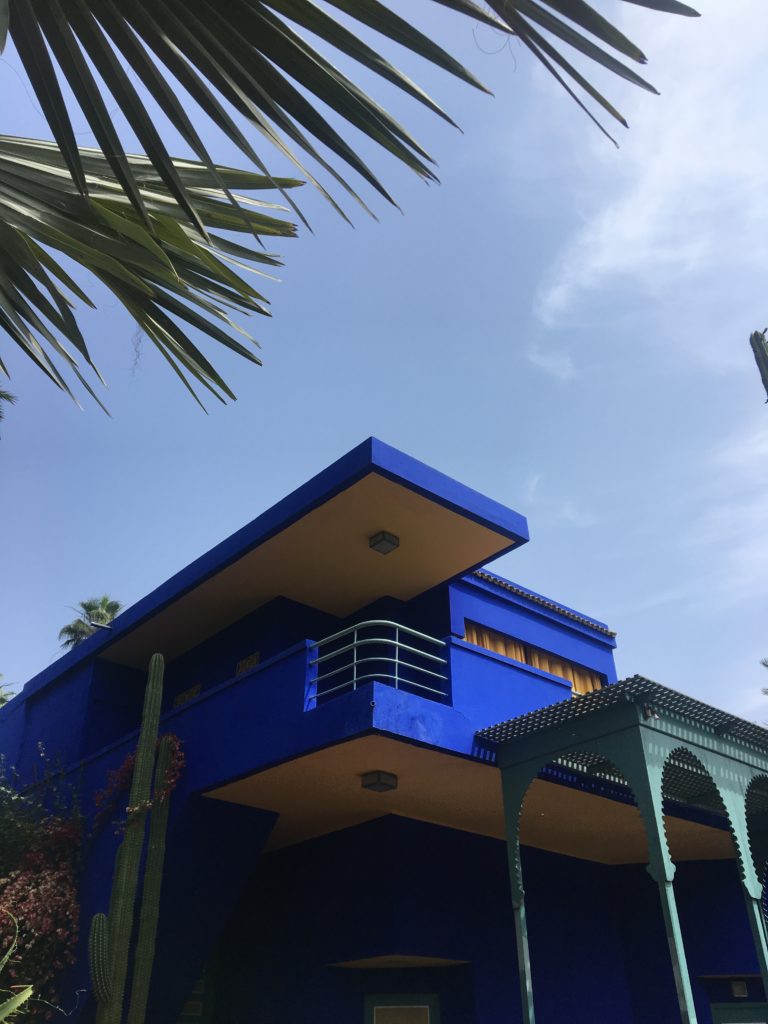
Apologies for the long silence – as seems to happen every year, Chelsea Flower Show and other things get in the way. One of the other things this May was a trip to Marrakech. As with our trip to Italy last autumn, Vicky and I principally went to look at gardens, which we did in abundance. I’ll cover the two most prominent gardens in this post – Majorelle garden and Le Jardin Secret, but I will delve into others in a following post that you might want to visit if you are heading out to Morocco.
The Majorelle Garden was created by the French painter Jacques Majorelle over a forty year period in the first half of the twentieth century, up until his divorce in 1950, when it was sold. He also built a remarkable cubist villa designed by Paul Sinoir. Following the sale, the garden fell into disrepair until it was rediscovered by Yves Saint-Laurent and Pierre Bergé who set about restoring it.
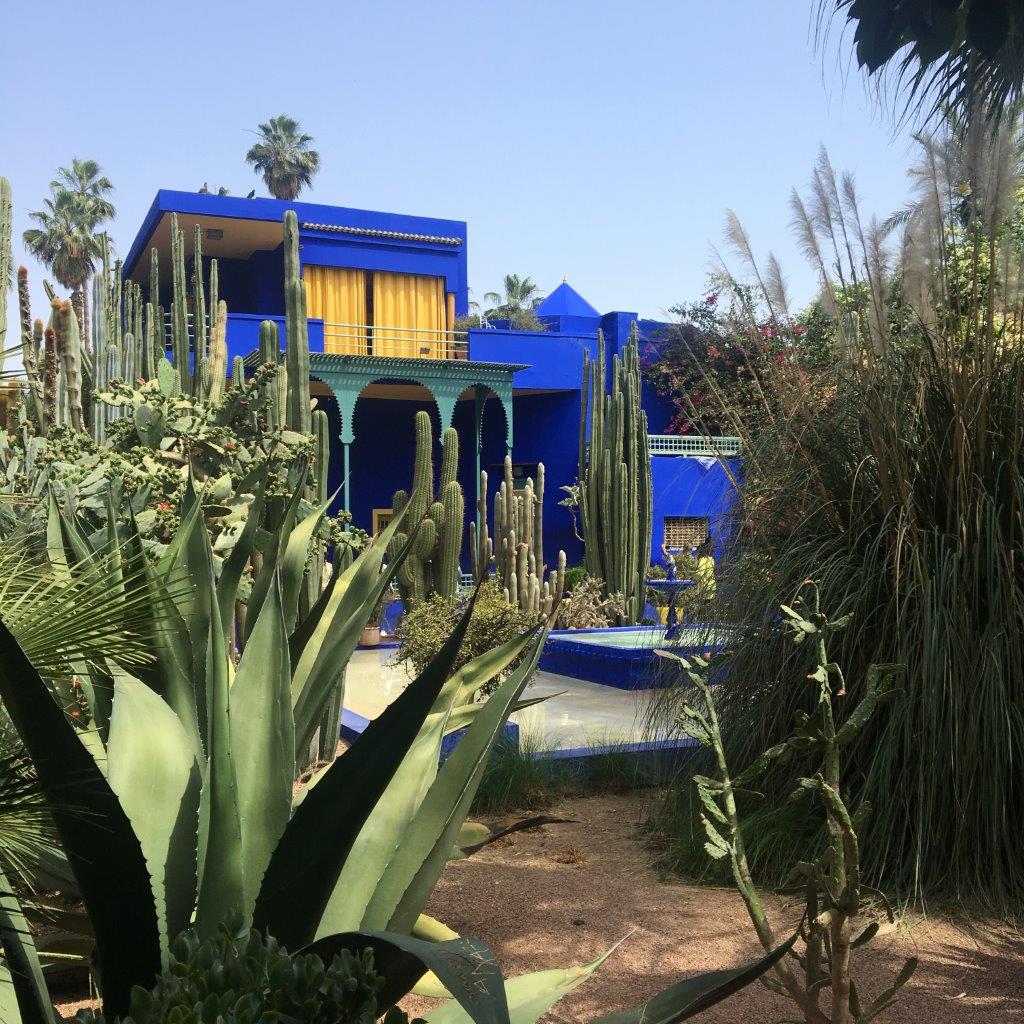
The garden’s most notable feature is its use of colour, particularly the bright cobalt blue (known as Bleu Majorelle) which many of the structures and containers are painted. This is remarkable – and much imitated. However, although this is what everybody notices first, there is much more to the garden than this.
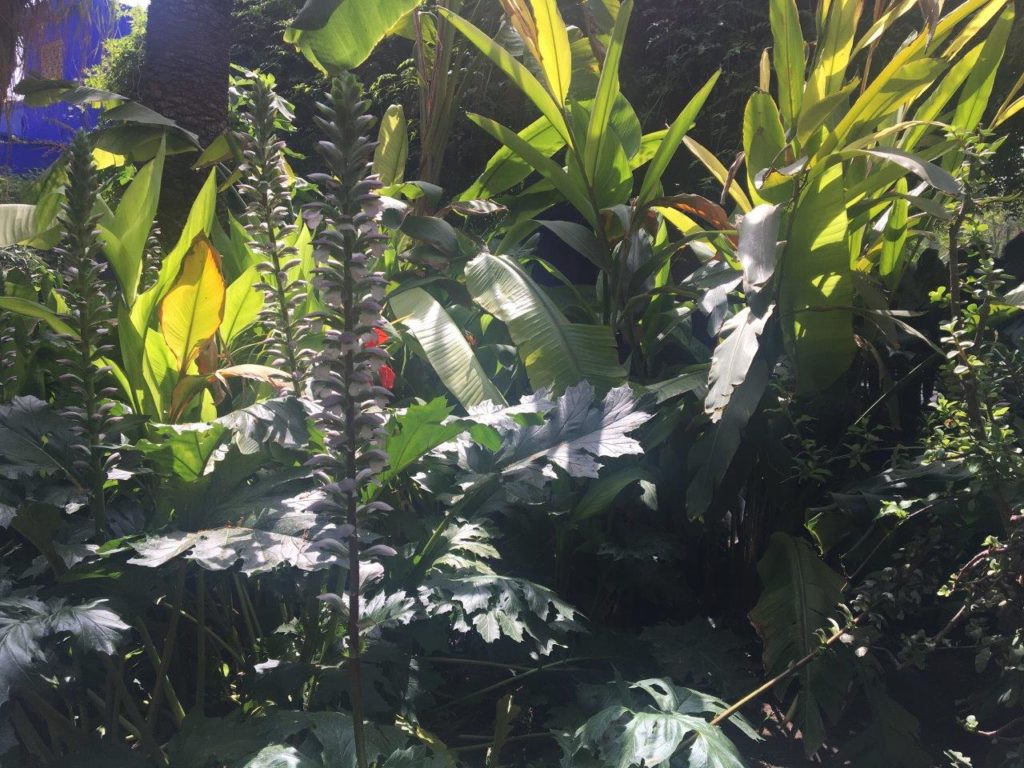
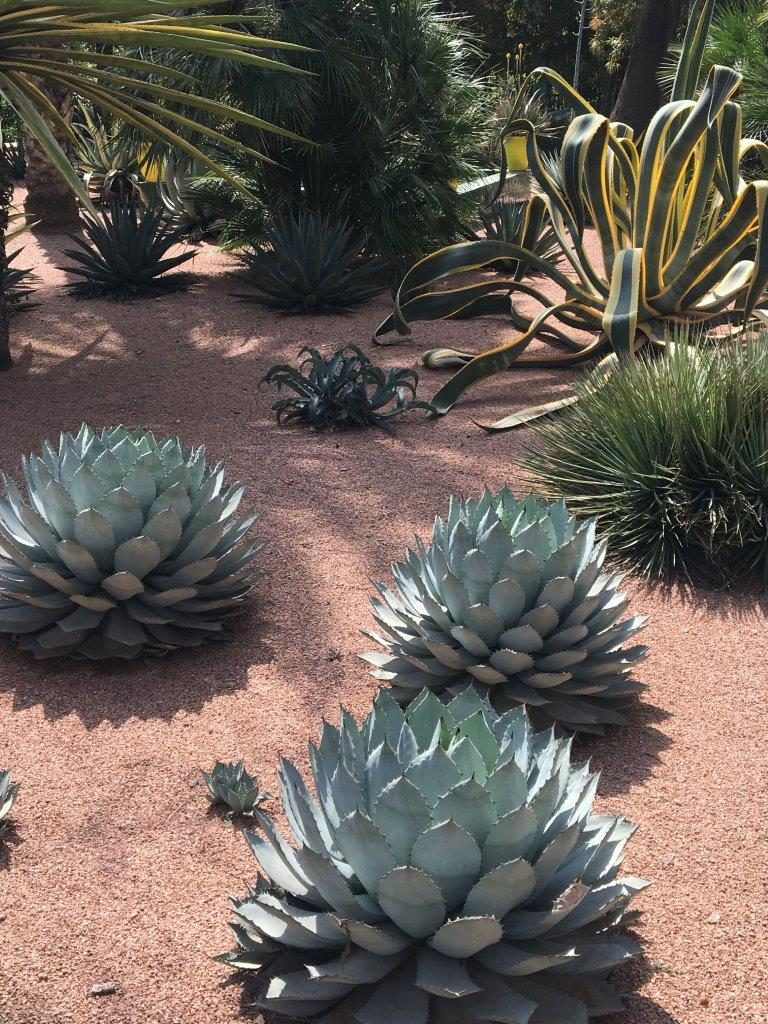
The structure of the garden is interesting. It is actually two gardens joined together (check opening times if you are going – part of the garden is only open a couple of days a week, which is not really advertised). It slips comfortably from informal to formal and back again. There are unexpected vistas and some great shots of the Sinoir-designed villa against the sky. But the thing I liked in particular was the variety and richness of texture. It swings from mounds of brightly coloured Bougainvillea through chalky blue-grey succulents to spikey palms.
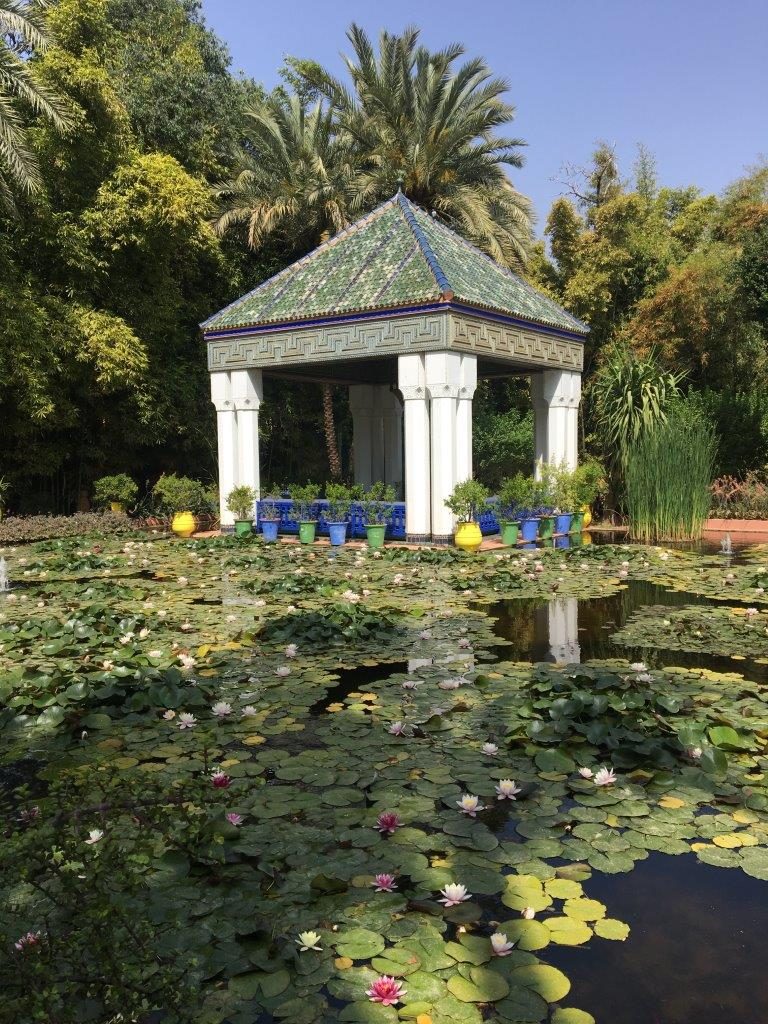
The use of water is also beautiful and very reminiscent of Islamic gardens (which is hardly surprising). There is a system of rills and large tanks, with the latter full of water lilies.
My advice would be to visit early or late in the day to avoid the crowds. The garden is extremely popular with tourists.
Later on in our trip, we visited Tom Stuart-Smith’s Jardin Secret. This is a garden situated near the old city, on the site of an ancient Riad (Garden Villa). The original plan of the developers had been to build a hotel, but the combination of planning consent and funding proved difficult and eventually the idea of the garden (as an attraction) was born.
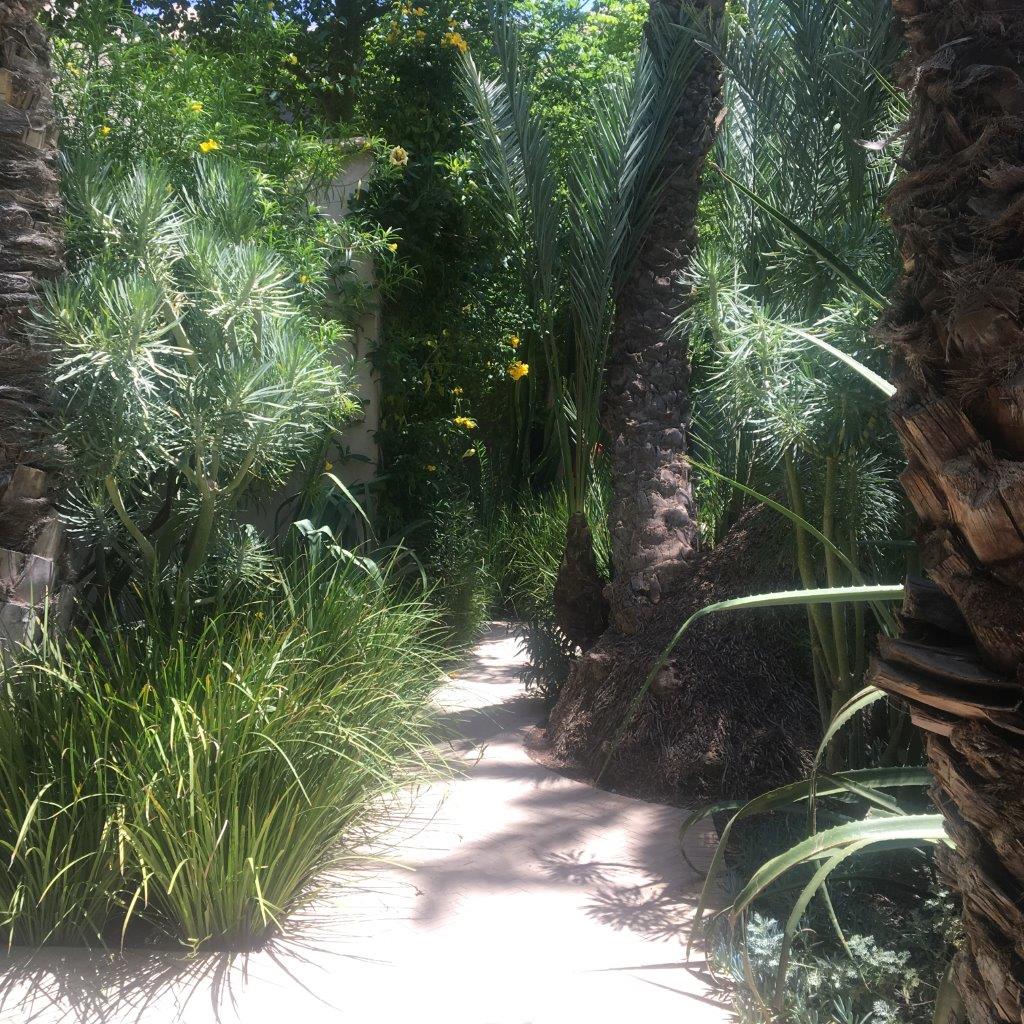
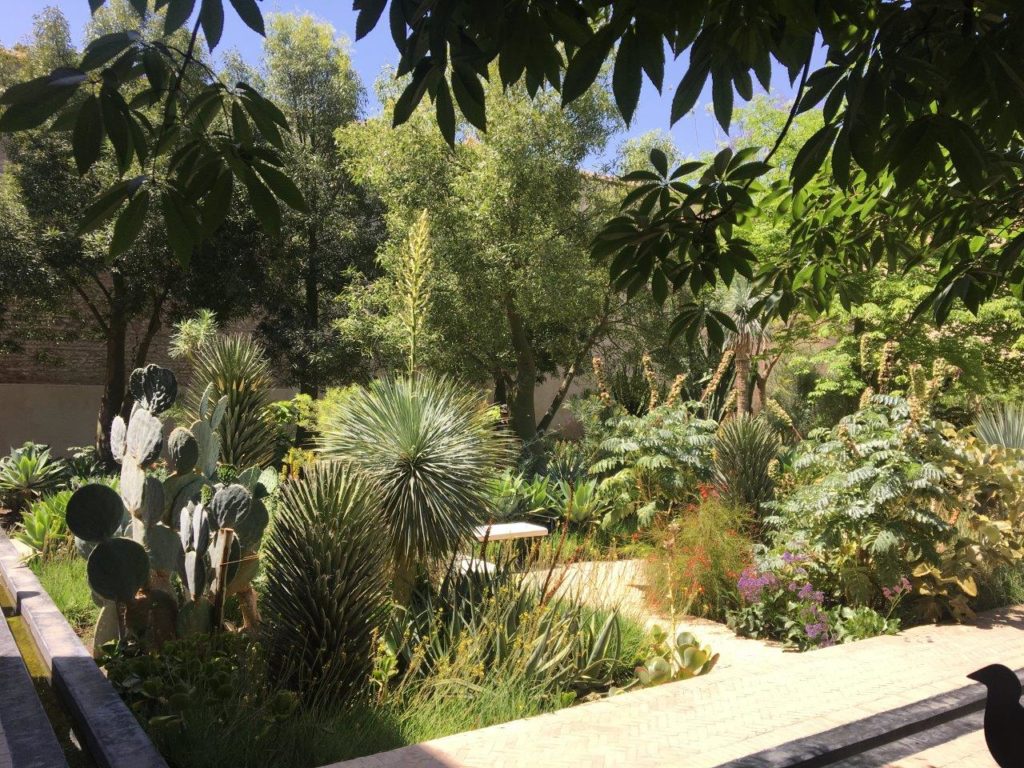
The garden is made up of two linked spaces, joined at one corner. The two gardens have very different characters. The first is strictly non-historical in its design, although it draws deeply on the ideas of courtyard gardens and also the concept of Marrakech as a the crossroads of culture – African, Western, Arab and Eastern. It consists of plants from all over the world – a riot of texture and colour. I spent hours in in this space, endlessly photographing and trying to etch the textures and colours into my memory. I was like a child confronted with a free-run of pick-and-mix (and a very large bag!). The multiple textures in particular fascinated me.
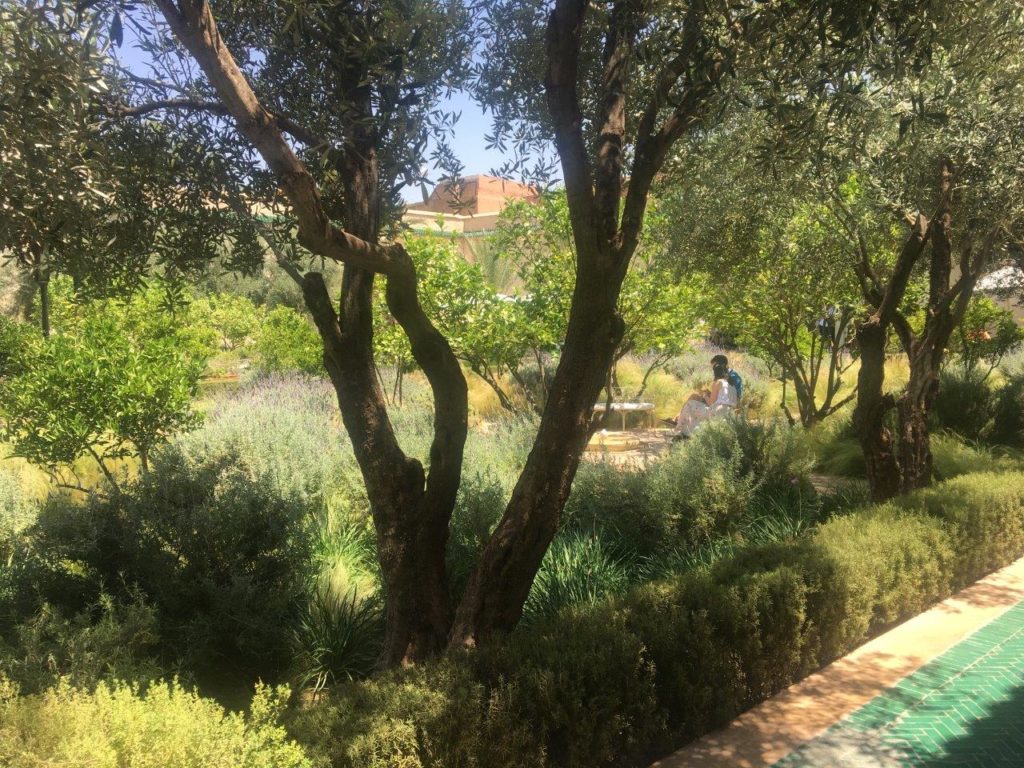
The second garden is more traditional in some ways; the layout having been designed according to familiar middle eastern quartered patterns, with a pavilion at the centre. Some of the plants are also familiar – Citrus and Olive are used in abundance. Fig, pomegranate and date are there, but stuck over in one corner. The use of the rosemary hedges is also quite traditional, although the constantly moving fronds of grass and sweeps of Allium less so. Nonetheless, the whole effect is charming, and again I could have spent hours there (indeed I did).
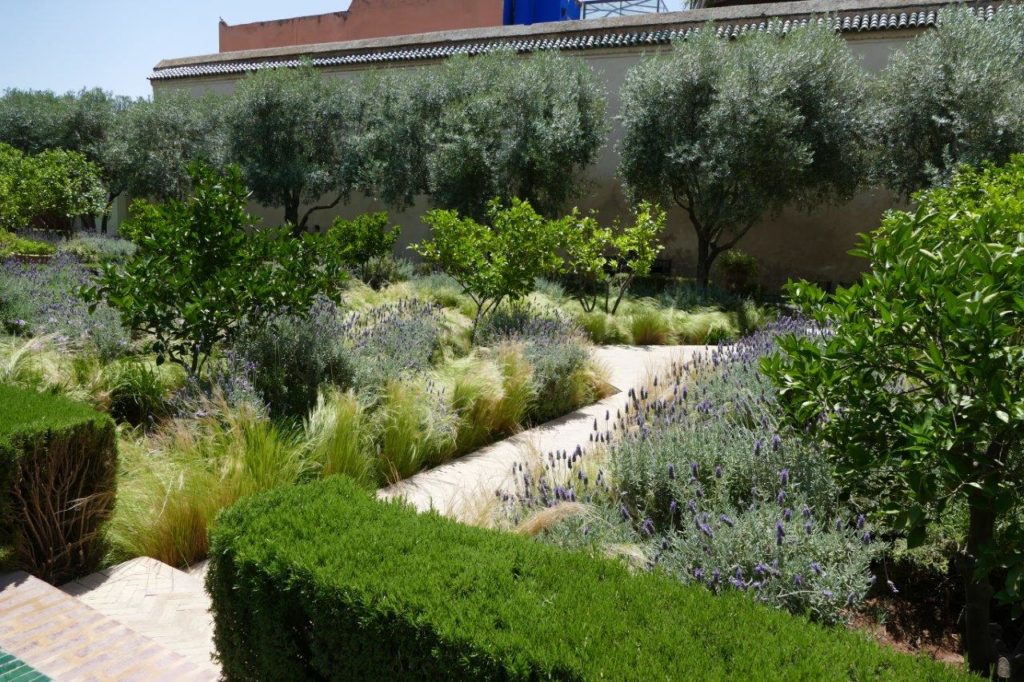
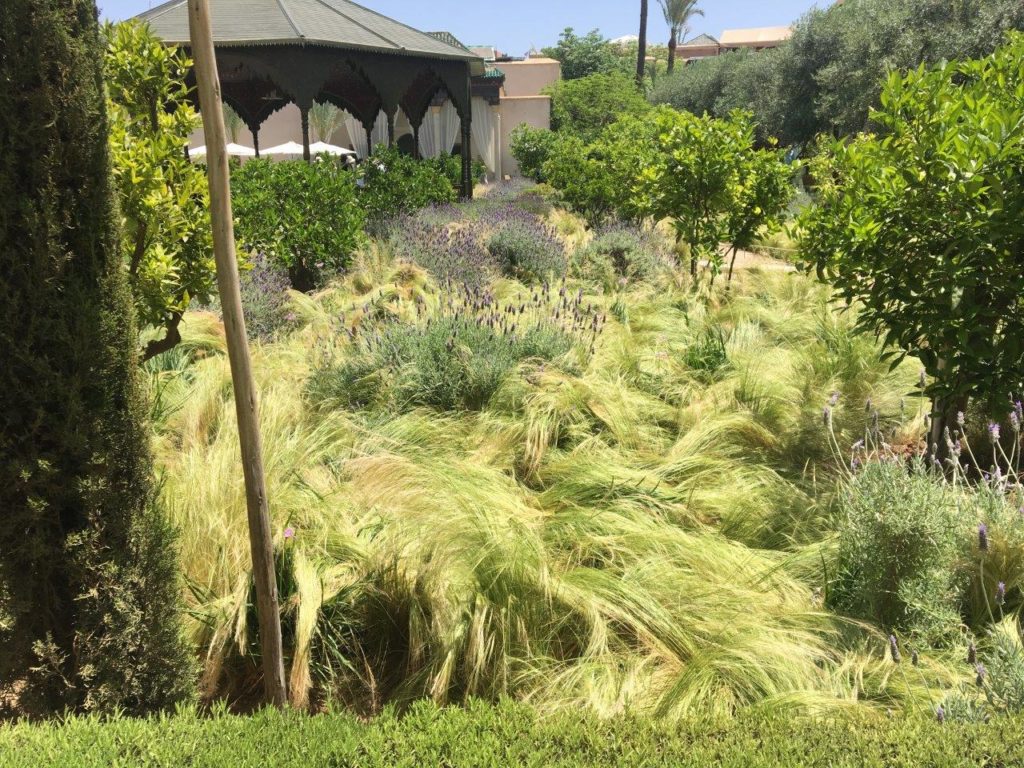
Connecting the two gardens is a series of water features which flow in a serial manner, very much as they would have done originally. The larger and more traditional of the two courtyards is laid on the lines of the original garden and many of the historic water features have been restored. These would have been fed from a private water supply drawn from the Atlas mountains. The ancient technology needed to achieve this is thoroughly explored through very clear information boards. There are also some videos, including interviews with Tom.
If you love gardens, this is not one to miss – I would say you need to set aside about three hours for a visit, although you could do it in less. Luckily, there is a very nice roof terrace restaurant with shady parasols in which to recover.

